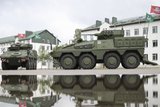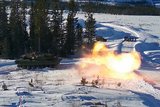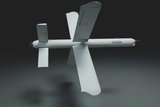North and South Korea remove landmines at border
The two Koreas on 1 October started to remove landmines along a section of their heavily fortified border as part of a summit deal to ease military tensions, Seoul said.
The agreement between the nations – which are technically still at war – was reached at a meeting in Pyongyang in September 2018 between South Korean President Moon Jae-in and his North Korean counterpart Kim Jong Un.
The summit was the third this year between the leaders, following a rapid thaw in relations.
Both sides undertook to carry out landmine removal work at the Joint Security Area (JSA) over a 20-day period, according to the South Korean defence ministry.
A spokesman said the operation had begun on both sides, though this was not confirmed by the North.
The JSA, also known as the truce village of Panmunjom, is the only spot along the tense, 250km frontier where troops from the two countries stand face to face.
It is often used as a venue for talks between the two Koreas.
More than 800,000 mines are believed to have been planted along the entire border during and after the 1950-53 war to defend against infiltration.
Moon has advocated dialogue with the isolated North to nudge it toward denuclearisation.
During his summit with Kim in September 2018, the two leaders also agreed to remove some guard posts at the border by the end of 2018 and halt military drills on the border from November.
More from Land Warfare
-
Germany signs multi-billion-dollar deals for 6x6 CAVS and GDELS Eagle vehicles
The order is a further boost for the Common Armoured Vehicles System programme which has notched notable successes in the past 12 months. The first vehicle, made in Finland, will be delivered next year with local production expected to ramp up in 2027.
-
![Rheinmetall and KNDS tank tie-up narrows trans-European options]()
Rheinmetall and KNDS tank tie-up narrows trans-European options
The French and German governments signed an agreement in June 2018 to cooperate on the development of a new main battle tank under the Main Ground Combat System programme but the effort has struggled. This new agreement may damage it further.
-
![2025 land market review: British Army woes, European heavy armour and US MBT progress]()
2025 land market review: British Army woes, European heavy armour and US MBT progress
The last year has seen several major procurements in the land market. Shephard’s Dr Peter Magill reviews the main trends and themes in land procurement of 2025.
-
![Hungary set to begin using Hero 400 loitering munitions]()
Hungary set to begin using Hero 400 loitering munitions
Developed by Israel's Uvision and with systems being sold in the thousands to multiple European NATO countries and the US, the Hero family of loitering systems is also in production in the US and Italy, the latter through Rheinmetall.
-
![Croatia orders Leopards and CAESAR howitzers as Lithuania orders more CAESARs]()
Croatia orders Leopards and CAESAR howitzers as Lithuania orders more CAESARs
The Leopard is becoming the tank of choice in central and eastern Europe as Croatia joins Lithuania, the Czech Republic and Hungary in ordering the platform. Lithuania and Croatia have also signed for CAESAR howitzers.
-
![Light Reconnaissance Strike – enabling a vital mission set (Studio)]()
Light Reconnaissance Strike – enabling a vital mission set (Studio)
A new system-of-systems concept will unlock digital integration of sensors and weapons for Light Forces, allowing them to shape the battlefield environment on their own terms and upgrade legacy platforms.


























